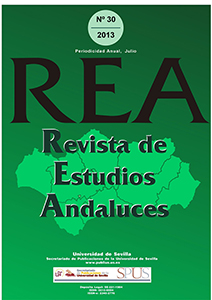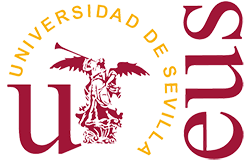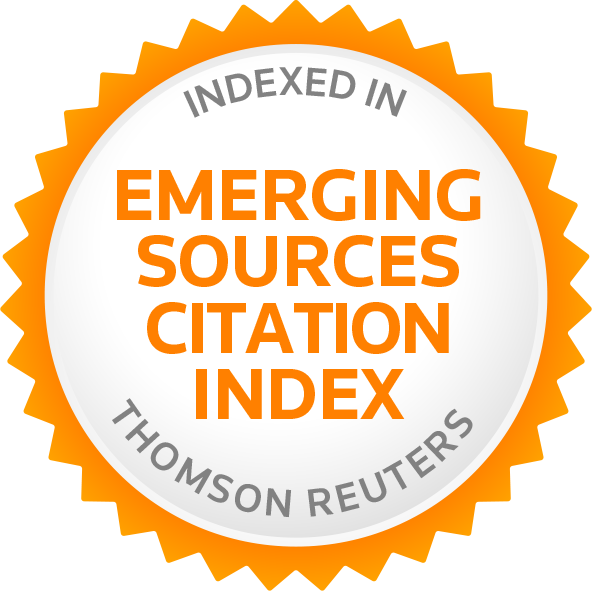Redes de transporte, articulación territorial y desarrollo regional.
DOI:
https://doi.org/10.12795/rea.2013.i30.02Palabras clave:
Redes de transporte, accesibilidad, sistemas de transporte, redes de transporte, articulación territorial, desarrollo regionalResumen
La dinámica de las redes de transporte se muestra hoy como uno de los rasgos más significativos en relación con los cambios derivados de la globalización y las nuevas aplicaciones conceptuales y tecnológicas introducidas en la industria del transporte. La gestión de dichas redes y la implementación de modelos logísticos más eficientes, permiten la utilización de sus potencialidades derivadas en lo concerniente al diseño de políticas de articulación territorial en diferentes escenarios del mundo, así como su empleo como valiosos instrumentos al servicio del desarrollo regional en sus diferentes escalas espaciales.
Descargas
Citas
Adey, P. (2009): Mobility. Key ideas in geography. Nueva York-Londres, Routledge.
Anas, A. y Liu, Y. (2007): “A regional economy, land use and transportation model (RELU-TRANS): formulation, algorithm design and testing”. Journal of Regional Science, 47, 3, 415-455. http://dx.doi.org/10.1111/j.1467-9787.2007.00515.x
Axhaunsen, K. (2007): Accesibilities: long-term perspectives. International Conference “access to destination”. Minneapolis, University of Minnesota.
Baker, J. y Macdonald, M. (2006): Sustainable transport choices and the retail sector. Londres, Planning for sustainable land use and transport, European Transport Conference.
Cresswell, T. (2006): On the move: mobility in the modern western world. Londres, Routledge.
Dandrea, A.; Ciolfi, l. y Gray, B. (2011): “Methodological challenges and innovations in mobilities research”. Mobilities, 6, 2, 149-160. http://dx.doi.org/10.1080/17450101.2011.552769
Dangelmaier, M. et al. (2011): “Generation of scenarios, preliminary assessment of safety effects and initial prioritization to increase the self-explaing and forgiving character of road environments”. BEKIARIS, E.-WIETHOFF,M (Eds.). En Infrastructure and safety in a collaborative world, Nueva York, Springer.
De Brucker, K.; Macharis, C. y Verbeke, A. (2011): “Multicriteria analysis in transport project evaluation: an institutional approach”. European Transport, 47, 3-24.
De Dios Ortuzar, J. y Willumsen, G. (2001): Modelling transport. Nueva York, Wiley and Sons.
Dooms, M. et al. (2007b): “An application of stakeholder analysis to infrastructure development: the case of the DHL super-hub location choice. En Transport project evaluation. Extending the social cost-benefits approach”, HAEZENDONCK, E. (Ed.). Chetelham, Edward Elgar.
Dooms, M. (2010): Crafting the integrative value proposition for large scale transport infrastructure hubs: a stakeholder management approach. Bruselas, VUB Press.
Ehmre, J.; Meisel, S. y Engelman, S. (2009): “Data chain management for planning in city logistics”. International Journal of Data Mining, Modelling and Management, 1, 4, 335-356. http://dx.doi.org/10.1504/IJDMMM.2009.029030
Elhedeli, S. y Hu, F. (2005): “Hub-and-spoke network design with congestion”. Computers & Operation research, 32, 1615-1632.
European Transport Conference (2006): Sustainable transport choices and the retail sector. Londres, Planning for sustainable land use and transport, European Transport Conference.
Garrison, W. y Levinson, D. (2006): The transportation experience: policy, planning and deployment. Oxford, Oxford University Press.
Gokhan, N. y Needy, N. (2010) “Development of a simultaneous design for supply chain process for the optimization of the product design and supply chain configuration problem”. Engineering Management Journal, 22, 4, 20-30.
Guneri, A.; Cengiz, M. y Seker, S. (2009): “A fuzzy ANP approach to shipyard location selection”. Expert Systems with Application, 36, 4, 7992-7999. http://dx.doi.org/10.1016/j.eswa.2008.10.059
Haezendonck, E. (2007): Transport project evaluation. Extending the social cost-benefits approach. Chetelham, Edward Elgar.
Hakimian, H. y Zandi, M. (2009): Foliated transportation Systems. Boras, Universidad de Boras.
Haynes, P. (2010): “Information and communication technology and international business travel: mobilities allies ?”. Mobile Computing, Mobilities y Journal of Urban Technology (Edición especial virtual).
Hensher, D. (2004): Handbook of transport geography and spatial systems. Bingley, Emerald Group Publishing
Hensher, D. y Puckett, S. (2005): “Refocusing the modlleing of freight distribution: development of an economic-based framework to evaluate supply chain behaviour in response to congestion charging”. Transportation, 32, 573-602. http://dx.doi.org/10.1007/s11116-004-7615-6
Hilletoft, P. (2009): “How to develop a differenciated supply chain strategy”. Industrial Management & Data Systems, 109, 1, 16-33. http://dx.doi.org/10.1108/02635570910926573
Iacono, M., Levinson, D. y El-Geneidy, A. (2008): “Models of transportation and land use change. A guide to the territory”. Journal of Planning Literature, 22, 323-340. http://dx.doi.org/10.1177/0885412207314010
International Transport Forum (2008): Transport and energy. The challenge of climate change. París, International Transport Forum.
Ison, S. et al. (2011): “UK regional airport commercialisation and privatisation: 25 years on”. Journal of Transport Geography, vol. 19, 1341-1349. http://dx.doi.org/10.1016/j.jtrangeo.2011.06.005
JENSEN, A. (2011): “Mobility, space and power: on the multiplicities of seeing mobility”. Mobilities, vol. 6, 2, 255-271. http://dx.doi.org/10.1080/17450101.2011.552903
Kile, J. (2011): The highway trust fund and paying for highways. Washington, Congressional Dudget Office.
Kalantari, J. y Lumdsen, K. (2007): Stepwise replacement of direct shipment network wit a hub and spoke system. Reykjavik, NOFOMA.
Kalantari, J. y Sternberg, H. (2009): “Research outlook on a mixed model transportation network”. European Transport, 41, 1-18.
Knockaert, J.; Evangelinos. C.; Rietveld, P y Wieland, B. (2009): “Differentiated infrastructure charging: a comparison on theory and practise”. European Transport, 43, 4-34.
Knowles, R.; Shaw, J. y Docherty, I. (2008): Transport geographies: mobilities, flows and spaces. Chichester, Blackwell.
Koh, A.; Sheperd, S. y Sumalle, S. (2009): “Second best toll and capacity optimisation in netwoks: solution algorithm and policy implications”. Transportation, 36, 2, 147-165. http://dx.doi.org/10.1007/s11116-009-9187-y
Levinson, D. (2008): “Density and dispersion: the codevelopment of land use and rail in London”. Journal of Economic Geography, 8, 1, pp. 55-77.
http://dx.doi.org/10.1093/jeg/lbm038
Levinson, D. (2011): “The evolution of transport and land use: an introduction to the special issue and an outline of a research agenda”. Journal of Transport and Land Use, vol. 4, 2, 1-3. http://dx.doi.org/10.5198/jtlu.v4i2.332
Lewis, E. (2006): Future models of retail logistics in age of e-comerce. Londres, Planning for sustainable land use and transport, European Transport Conference.
Liu, J. y Chan, C. (2003): “Mixed truck delivery systems with both hub-and-spoke and direct shipment”. Transportation Research Part E, 39, 325-339. http://dx.doi.org/10.1016/S1366-5545(03)00005-X
Mackinnon, A. (2006): “A review of European truck tolling schemes and assessment of their possible impact on logistics systems”. International Journal of Logistics: Research and Applications, 9, 3, 191-205. http://dx.doi.org/10.1080/13675560600859110
Mackinnon, D.; Shaw, J. y Docherty, I (2008): Diverging mobilities: devolution, transport and policy innovation. Bingley, Emerald Group Publishing.
Mcdonnald, M. (2006): Intelligent transport systems In Europe: oportunities for future research. Londres, World Scientific.
Marcucci, E y Danielis, R. (2008): “The potential demand for an urban freight consolidation centre”. Transportation, vol. 35, pp. 269-284. http://dx.doi.org/10.1007/s11116-007-9147-3
Mees, P. (2010): Transport for suburbia: beyond the automobile age. Londres, Earthscan.
Meunier, D. y Quinet, E. (2009): “Effect of imperfect competition on infrastructure charges”. European Transport, 43, 113-136.
Nagurney, A. (2006): Supply chain network economics: dynamics of prices, flows and profits. Cheltenham, Edward Elgar Publishing.
Notteboom, T. (2007): “Concession agreements as port governance tools”, in BROOKS, M y CULLINAME, K. (Eds.), Devolution, port governance and performance, pp. 449-467, Elsevier, London.
Okumura, M.; Tsukai, M y Kimura, Y. (2010): “Programation of improvement effects of critical inter-city link. The japanese decadal change of the available travel routes”. Journal of Eastern Asia Society for Transportation Studies, Travel demand analysis and forecast, 8, 325-335.
Persson, P. (2006a): Traceability of goods in a transportation network and the potential impact on logistics and transportation services. Izmir, 4th International logistics and supply chain congress.
Persson, P. (2006b): “Identification technologies in transportation: in the context of foliated transportation networks”. Australasian Transport Research Forum, vol. 29 .
Pitfield, D. (2009): “The assessment of the EU-US open skies agreement: the counterfactual and other difficulties”. Journal of Air Transport management, 15, 6, 308-314. http://dx.doi.org/10.1016/j.jairtraman.2009.04.002
Prashler, J. y Bekhor, S. (2004): “Route Choice models used in the stochastic user equilibrium problem: a review”. Transportation Review, 24, 4, 437-463. http://dx.doi.org/10.1080/0144164042000181707
Quak, J. y Koster, M (2006): Retailers distribution and local time-window policies, in E. TANIGUCHI Y R. THOMPSON (Eds.). Recent advances in city logistics, Amsterdam, Elsevier.
Rodriguez, J.P.; Contois, C. y Slack, B (2009): The geography of transport systems. Londres, Routledge.
Roth, G. (2006): Street smart: competition, entrepreneurship and the future of roads. Oakland, The Independent Institut.
Sánchez-Borrás, M. y López, A. (2009): “Rail Infrastructure Charging Systems for High-Speed Lines in Europe”. Transportation Research Board, Annual Meeting 2009 Paper nº 09-1278.
Shiftan, Y.; Bekhor, S. y Albert, G. (2010): “Route choice behaviour with pre-trip travel time information - a combined rp/sp approach”. IET Intelligent Transport Systems, vol. V, issue 3, 183-189.
Southworth, F. (2010): Freight flow models. Intermodal transportation: moving freight in a global economy. Washington, ENO Foundation.
SMall, K. y Verhoef, E. (2007): The economics of urban transportation. Routledge, London.
Srai, J. y Gregory, M. (2008): “A supply network configuration perspective on International supply chain development”. International Journal of Operations & Production Management, 28, 5, 386.411.
Stagl, S. (2007): SDRN Rapid research and evidence review on emerging methods for sustainable valuation and appraisal. A report to the sustainable development research network. Londres, Policy Studies Institute.
Susilawati, S., Taylor, M. Y Somenahalli, S. (2010): “Travel time reability measurement for selected corridors in the Adelaide metropolitan area”. Journal of the Eastern Asia Society for Transportation Studies, Transportation general, 8, 86-102.
Timilsina, G. y Dulal, H. (2009): “Regulatory instruments to control environmental externalities from the transport sector”. European Transport, 41, 80-112.
Uury, P. (2007): Mobilities. Cambridge, Polyty.
Verhoeven, P. (2006): “Port management reform in Europe: is there a role for the EU ?. En Ports are more than piers”, in T. NOTTEBOOM (Ed.). Antwerpen, De Lloyd.
Verhoeven, P. (2008): European ports policy: meeting contemporary governance challenges. Dalian, Proceedings of the 2008 IAME Conference.
Wilson, M. (2007): “The impact of transportation disruptions on supply chain performance”. Transportation Research Part E, 43, 4, 295-320. http://dx.doi.org/10.1016/j.tre.2005.09.008
Windt, K. y Huismann, M. (2007): “Changing paradigma in logistics. Understanding the shift from conventional control to autonomous cooperation and control”, in M. Hilsmann y K, Windt (Eds.), Understanding autonomous cooperation and control in logistics, 1-71.
Witlox, F. (2006): “The Iron Rhine railway link: a chronicle of Duth-Flemish geo-politics base on contextual history”. The Journal of European Economic History, 35, 1, 149-173
Wu, J.; Sui, Y. y Wang, T. (2009): “Intelligent transport systems in China”. Municipal Engineer, 162, 25-32. http://dx.doi.org/10.1680/muen.2009.162.1.25
Xie, F. y Levinson, D. (2007b): “Measuring the structure of road networks”. Geographical Analysis, 39, 3, 336-356. http://dx.doi.org/10.1111/j.1538-4632.2007.00707.x
Xie, F. y Levinson, D. (2010): “How streetcars shaped suburbanización: a granger-causality analysis of land use and transit in the Twin Cities”. Journal of Economic Geography, 10, 3, pp. 453-470. http://dx.doi.org/10.1093/jeg/lbp031
Wu, J. (2004): Introduction to transport systems. Taipei, Taiwan Press Co. Ltd.
Yang, H.; Feng, X. y Hung, H. (2009): “Private road competition and equilibrium with traffic equilibrium constraints”. Journal of Advanced, 43, 1, pp. 23-45.
Yang, Z. y Chen, K. (2010): “Optimization of shipping network of trunk feeder lines for inter-regional and intra-regional container transport, Asia”. Journal of the Eastern Asia Society for Transportation Studies, Logistics and freight transportation, 8, 694-705.
Yerra, B. y Levinson, D. (2005): “The emergency of hierarchy in transportation Networks”. Annals of Regional Science, 39, 3, 541-553. http://dx.doi.org/10.1007/s00168-005-0230-4
Descargas
Publicado
Cómo citar
Número
Sección
Licencia
La edición electrónica de la Revista de Estudios Andaluces se ofrece en acceso abierto desde el número 28 publicado en 2011 hasta la actualidad. Las ediciones impresa y electrónica de esta Revista son editadas por la Editorial de la Universidad de Sevilla, siendo necesario citar la procedencia en cualquier reproducción parcial o total.
La Revista de Estudios Andaluces no cobra tasas por el envío de trabajos, ni tampoco cuotas por la publicación de sus artículos. La Revista es gratuita desde el momento de la publicación de cada número y sus contenidos se distribuyen con la licencia “CreativeCommons Atribución-NoComercial-SinDerivar 4.0 Internacional” , que permite al usuario de la Revista de Estudios Andaluces criterios que cumplen con la definición de open access de la Declaración de Budapest en favor del acceso abierto. Puede consultar desde aquí la versión informativa y el texto legal de la licencia. Esta circunstancia ha de hacerse constar expresamente de esta forma cuando sea necesario.
Aceptado 2016-06-08
Publicado 2013-07-25







